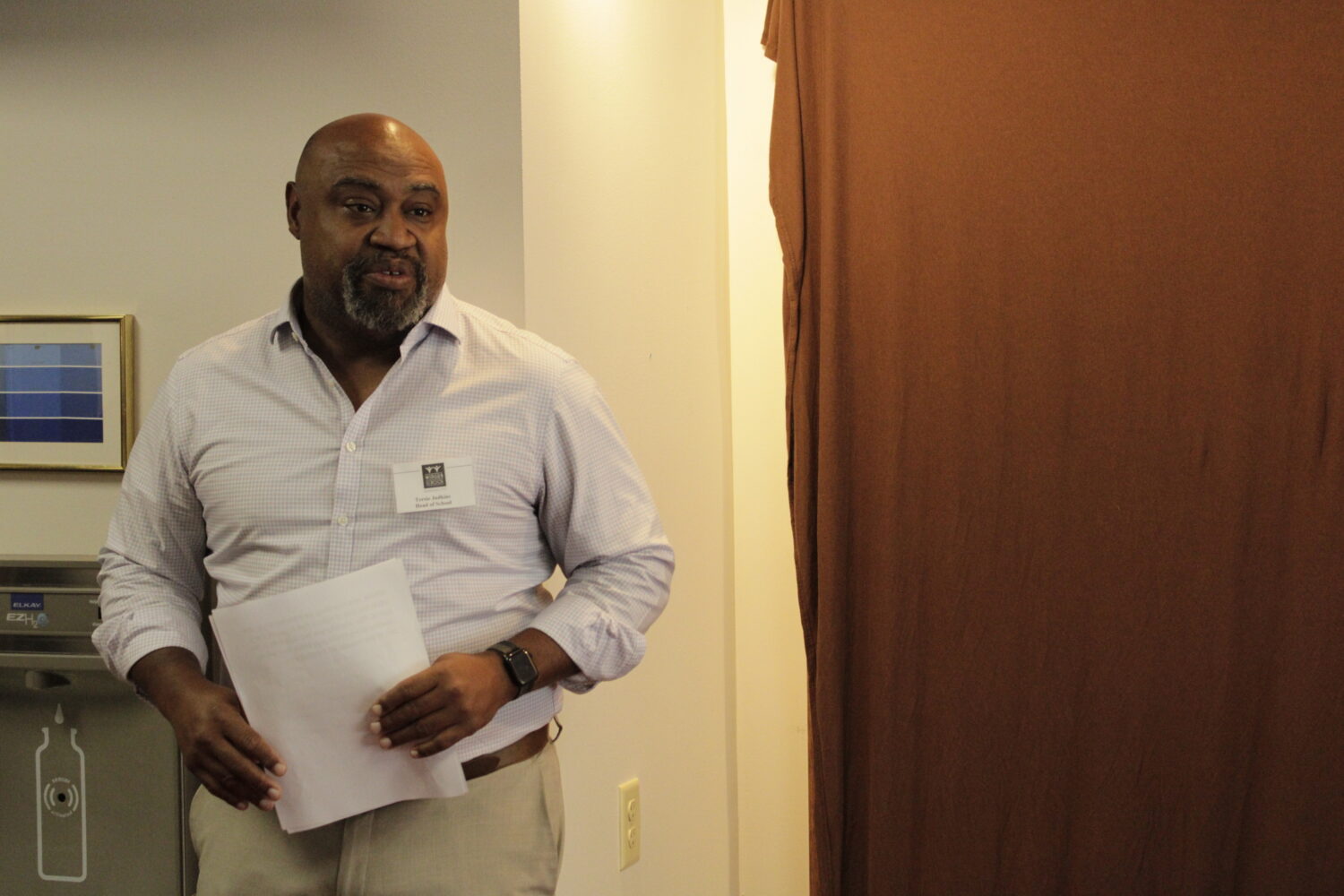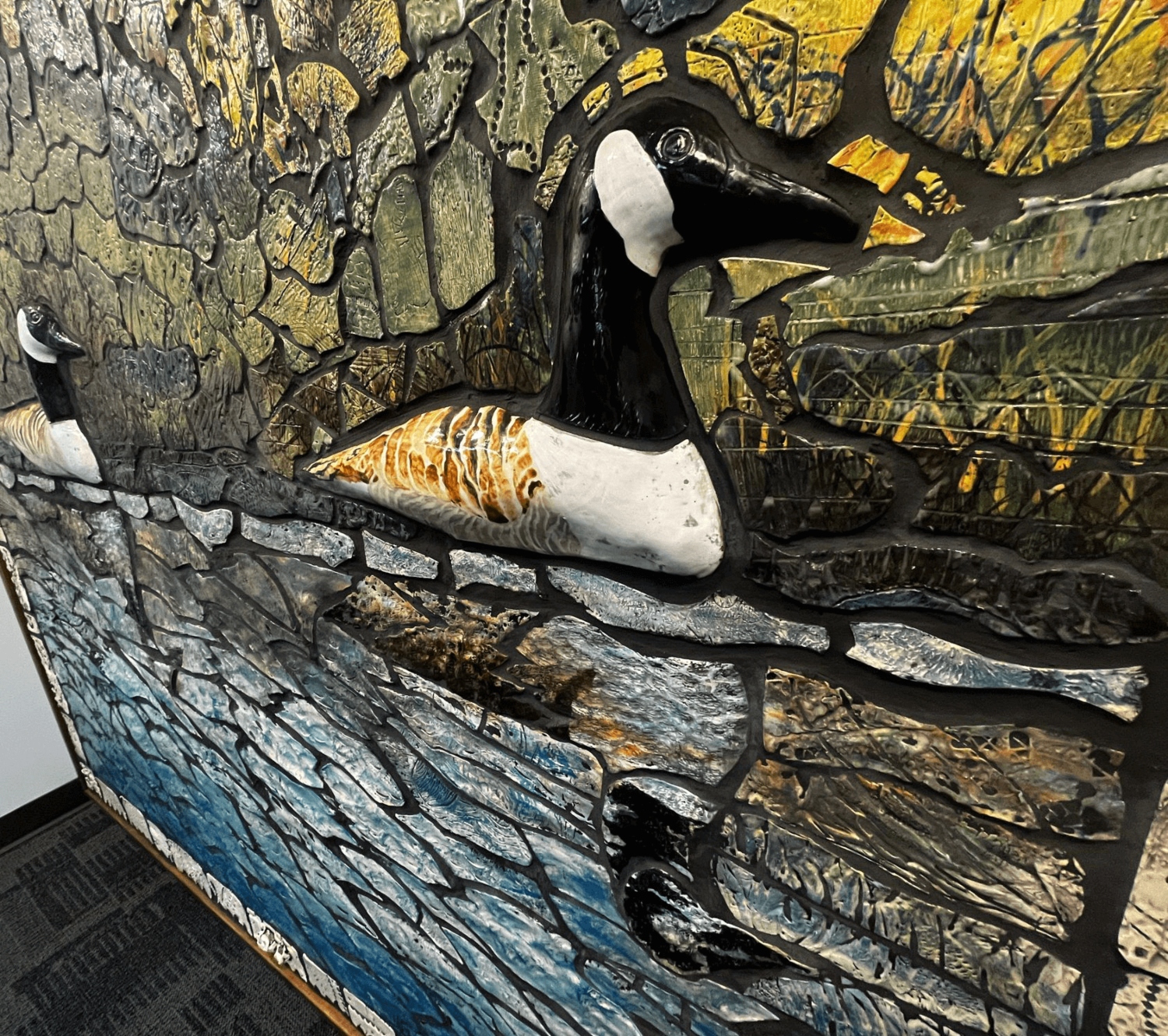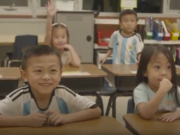The entrance to Wingra School on Madison’s near west side is now adorned by a large mosaic depicting the water and water protectors of Lake Wingra, designed by a Ho-Chunk artist and built by more than 100 students.
The installation, called Reflections on Lake Wingra, is the culmination of a commitment now-retired head of school Debbie Millon made almost two years ago to create “a multicultural mural or art installation as part of our celebration of 50 years and moving into our next 50,” said current head of school Torsie Judkins. “One of the things that’s really important to us here at Wingra is really honoring the land and our school sits on.”

The school reached out to Little Eagle Art Foundation (LEAF), an organization based in Sauk County that supports Indigenous artists, and brought director Melanie Tallmadge Sainz on as artist in residence. Tallmadge Sainz taught middle school for 30 years, so knew what she was getting into.
“We all carry energy from the Creator. And this creative energy from all 200 little to medium-size hands, and many of the staff and a couple board members (who) helped, went into this installation,” she told the assembled staff and board members at an unveiling ceremony Friday. “I encourage you guys throughout the year or periodically throughout your duration here of your connection to Wingra school, to use this to kind of reflect on why you’re a part of this community. And for me, now that I’ve put a lot of my energy into this, I really feel like I’m a part of this community as well.”
Tallmadge Sainz enlisted Milwaukee artist and educator Muneer Bahaddeen and Ho-Chunk student and LEAF studio assistant Valiance Vasquez to assist in the residency. Given the school’s proximity to Lake Wingra, the team decided to create a piece reflecting the natural beauty of the lake and the specific natural features found there — namely, the vegetation — cattails and bulrush — which the Ho-Chunk and all Indigenous people of the area would refer to as “water protectors.”
Tallmadge Sainz connected with local photographer Lisa Seidman and secured permission to adapt a photo of Canada geese on the lake.
“We explored some of the things that they wanted to engage with, especially the connection to the natural world. And I thought, what better way then to integrate a clay tile installation as the culminating event?” Tallmadge Sainz said.
Throughout the residency, students helped create the clay tiles that make up the mosaic. They used some of those water protector plants to create textures in the tile.
Along the way they learned some Ho-Chunk language — such as the original name for the lake, which would translate to “emerging turtles,” and the Ho-Chunk word for “duck” that became the basis for the English name of the lake. The students also learned about the importance of a connection to the natural world.
“Being that the place wingra is so close to the wetlands here in this part of Madison, we really wanted to encourage the children as they engage in the artmaking to also take it to the next step and be water protectors,” Tallmadge Sainz said.
Indigenous scholar and educator Dr. Patty Lowe also provided an inservice day for teachers.

“I hope that (students) engage with it, whether they touch it, stand next to it, get their pictures taken, try to find the tiles that they made, but use this as an opportunity to continue the story to tell their parents about what they learned, what they experienced, what they felt the grounding that they maybe the best practice that they took on,” Tallmadge Sainz said. “And then also, when they leave, when they grow, when they graduate, it’ll hopefully be like a magnet, something for them to take pride in as their legacy.”
She added that Wingra’s commitment to connecting with Indigenous communities — especially the Ho-Chunk people who occupied much of southern Wisconsin for thousands of years before European settlers arrived — goes beyond the English-language land acknowledgement statements that many organizations make.
“(A land acknowledgement) can be just a politically correct statement that you’re taking on. When you have no contact with Indigenous peoples, it’s a political statement,” she said. “We are using art to build bridges. In this day and age, we need more bridge building. Art and creativity is a great way to develop friendship and camaraderie and to work together in a collegial way.”
This story has been updated to include the full title of the art installation.



































